Introduction
This year in my “Service, Society, and the Sacred,” a junior-senior elective religion/social studies course at HKIS, I decided to start the semester with an attempt to better understand how the technology revolution is impacting youth culture. In order for students to make their school year and their lives in general more fulfilling, the course’s main goal, I felt that we first needed to come to a collective understanding of the challenges students are facing. This blog entry shares the first unit of the year in which students reflected on how youth culture has been affected by technology.
Resources
I used several m ain resources for this unit. First, our most important
ain resources for this unit. First, our most important  resource was The App Generation: How Today’s Youth Navigate Identity, Intimacy, and Imagination in a Digital World (2013) by Howard Gardner and Katie Davis. Each student read one chapter focusing on a specific topic: personal identity (chapter 4), intimacy in relationships (chapter 5), or creativity (chapter 6). Second, we watched the riveting Hollywood film, “Disconnect” (2012), which gave students a chance to explore the perils of technology through this tightly written and well-acted production, which I wrote about last year. Of lesser importance, we watched portions of a revealing documentary about Amanda Todd, the Canadian teenager who was bullied until her suicide in 2012. We also watched MIT professor Sherry Turkle’s TED talk.
resource was The App Generation: How Today’s Youth Navigate Identity, Intimacy, and Imagination in a Digital World (2013) by Howard Gardner and Katie Davis. Each student read one chapter focusing on a specific topic: personal identity (chapter 4), intimacy in relationships (chapter 5), or creativity (chapter 6). Second, we watched the riveting Hollywood film, “Disconnect” (2012), which gave students a chance to explore the perils of technology through this tightly written and well-acted production, which I wrote about last year. Of lesser importance, we watched portions of a revealing documentary about Amanda Todd, the Canadian teenager who was bullied until her suicide in 2012. We also watched MIT professor Sherry Turkle’s TED talk.
Method
The method used to determine the results of this small project was quite simple. Students wrote two blog comments about what they thought were the most important ideas contained in the sections of the App Generation chapter that they read. The second blog entry also contained reflections on “Disconnect.” I then took their blog entries and created 19 statements that attempted to summarize the distinct points students put forward. The day following the movie I put up the 19 statements on our two classroom whyteboards and gave each student 14 yellow dots. I asked them to place a dot/s next to statements that best represented their concerns about the effect of technology upon students at HKIS. They could place as many dots as they wanted on any statement. (The whole list of statements can be found at the bottom of the entry in order of the number of dots received.) After adding up the scores, I took the top 7 statements and asked pairs of students to write a paragraph giving a more personal commentary on each statement.
Results
The top 7 answers with reflection by pairs of students are found below:
- Because technology does not require vulnerability, online relationships by nature are often jocular and easily dismissed, removing the commitment necessary for genuine friendship or collegiality.
“Online, we are less adept at sensing each other’s subtle body language and facial expressions, which cannot be expressed through technology. In addition, communicating virtually is so much easier, like a blanket covering our true emotions. For instance, in order to smile at someone in real life, we have two options: smile out of genuine emotion or put in the effort to fake a smile. And most people can tell the difference. Through technology, all it takes is two taps on the keyboard to send a smiley icon, and others can’t tell whether it’s sincere. Since we’re devoting and exposing less of ourselves as such, the relationship holds less truth, trust, commitment, and value” (Ivy and Angela). 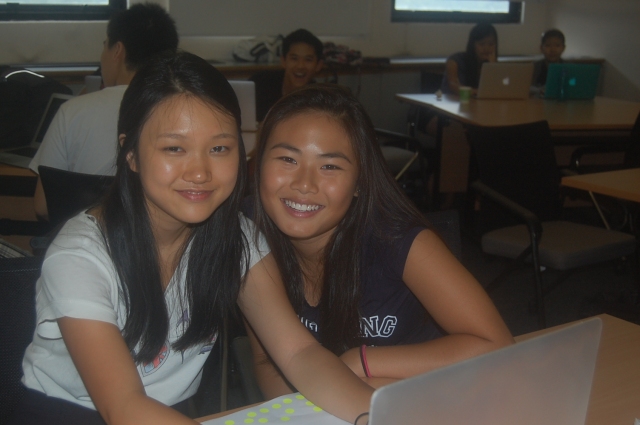
- By having social media constantly updating ourselves on what others are doing, we not only raise our own standards of expectation, but create a situation in which these endless comparisons result in a lowering of self-esteem.
“Because we are born with competitive natures, it is no surprise that we tend to compare ourselves to those around us. However, with the advancement of technology and the creation of social media, we have had far too much access to information, and have let interminable comparisons lead to lower self-esteems. With an abundance of applications such as Facebook, Instagram, Twitter, and Snapchat, we have become more depressed as we look at how “great” the lives of our friends are. In many occasions we ignore the fact that what we are looking at is really the filtered versions of our friends’ lives, and thus we feel jealous and insecure” (Skye and Jeffrey). 
- Despite youth’s hyperconnectivity, there is a loneliness of young people today that seems more pervasive due to the sense that one is insignificant in the context of millions of other young people accomplishing more and being more popular than you are.
“As members of the youth, we believe that due to the popularity of the Internet, the faceless majority of users lack identity. The presence of the Internet has made us more connected than ever; however, the vast numbers of users have made us lonelier. As a result, our voice is less heard among the sea of similar voices. The concern is that we are being starved of the essential factors of basic human needs of self-actualization (according to Maslow’s hierarchy of needs), which consists of: morality, creativity, and spontaneity” (Carl and Nicholas). 
- The ability of teachers and especially parents to track students’ educational progress and apply micromanagerial pressure results in not only a lack of independence among youth, but, more worrying, a potentially crippling paranoia that increases the risk of melancholy and even depression.
“We felt that this idea really resonates with both the HKIS community and the local Hong Kong community. With the convenience of technology, a student’s educational progress is easily accessible. The student is in turn affected by parents, teachers and other peers. Likewise, those groups are also affected. Many parents are overbearing and paranoid for their child’s future. As a result, they constantly check up on their children’s grades. It is easy for them to overreact at a few “failing” grades without understanding the context of their child’s situation. This leads to the student having a constant fear of these overreactions, and induces melancholy. Teachers can also add fuel to the fire by inputting wrong grades, further worrying frantic parents and students. They are also pressured to input grades on time. Perhaps peers might be one of the largest contributors to the paranoia that exists with readily available grades. Peers around you that constantly check and worry about their grades cause you to feel that you should do the same. There is also an unspoken environment of comparison between peers, which leads to anxiety due to judgment. The pressure to maintain all aspects of academic life at a high standard leads to less independence in pursuing a passion. This creates a false academic identity where a student might just be taking classes for the grades, or for what they think would be beneficial to their futures” (Michelle and Crystal). 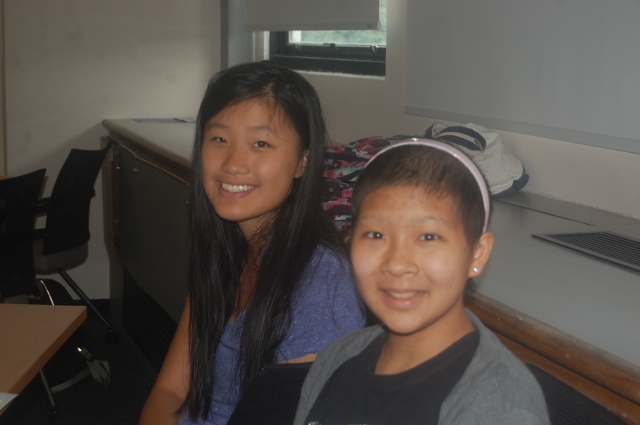
- Technology takes time and attention away from those things of deeper value and gives priority to that which is attention-grabbing and superficially stimulating.
“As the human population continues developing, it is becoming apparent that as a society, we are becoming more and more technologically advanced. While there are many advantages to modern technology, it is also a cause for concern because we are becoming detached from reality. While technological advancements have allowed people to be connected wherever and whenever you want, ironically, the very technology that is supposed to bring people closer together is actually pushing us further apart. One of the resounding examples of this phenomenon is Facebook. True, Facebook connects people from all across the world by way of personal walls and instant messaging. In this way, Facebook bring us closer to acquaintances, friends, and family by constantly bringing updates. However, most people have differing online profiles from who they really are. For some, the goal is to get the most “likes” on a status or picture. This raises the question, are we truly more connected to each other, even if the connection comes with the price of changing ourselves? Simple enough, people have lost grip with what it really means to build genuine relationships and interactions that make us human. Technology has created a superficial reality” (Bertram and Brian). 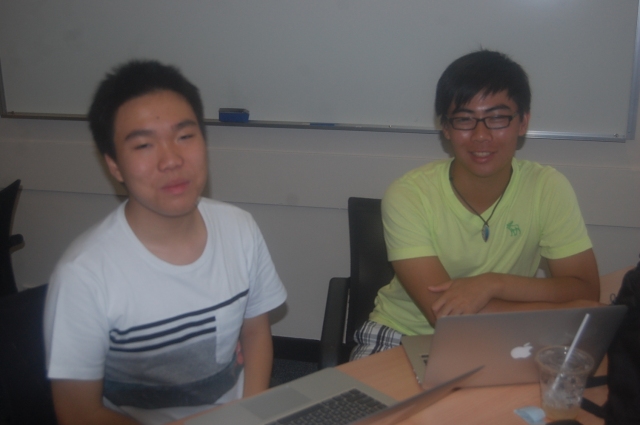
- The anonymity of online culture has created environments in which people can act in hurtful ways without consequences.
“The feeling of safety and protection from anonymity online allows us to act in hurtful ways. For example, there’s a trend on Facebook where people post asking others to like their status so that whoever likes the status gets an inboxed name of a mutual friend to comment about on the status. Because of the anonymity, this allows the commenter to be hurtful and say things he or she wouldn’t normally say to the friend’s face. Similarly, Ask.fm, a site that allows people to anonymously ask questions, further promotes this behaviour. This anonymous mask gives anyone online power and courage because there are no consequences to fear” (Nathalie and Jacque). 
- The readily available store of online images has removed the imaginal dimension from young people’s formative years, resulting in a decrease of creativity among today’s youth.
“What we believed when we read this quote was that video and picture in general is a great thing, but it serves to lower the creativity and imagination in all people. How so? Think about it this way: Nick Leung is sitting there reading a novel based on a certain character. Half way through, he finds out that there’s a matching movie to go along with the novel. As he searches up the movie on Google and clicks on “images,” he’s greeted with none other than the stern-set face of Daniel Craig, our beloved James Bond. Nick had spent half of the book conjuring up the image of this main character, only to have that image be absolutely shattered and replaced by the striking image of Mr. Craig. One might ask, how does this exactly “lower creativity?” Well, in this day and age, the sense we rely most heavily on is our sight. We make connections visibly, whether it be judging the aesthetics of a place, meeting new people, etc… Often, we are given situations in which descriptions are provided but there is no visual representation. Our brain then goes through this creative process where we analyze the description, and shortly after, the neurons in our brain fire off as the image of a person is constructed within the mind. Video and picture serve to cull the firing of neurons, as the imaginative process has been done for the viewer. Video constructs the image and delivers unto the viewers; therefore, the viewer doesn’t do anything himself or herself. Furthermore, once the video is absorbed by the viewer, it’s very difficult for him or her to replace it with another image; it’s truly ingrained within” (Rohan and Nick). 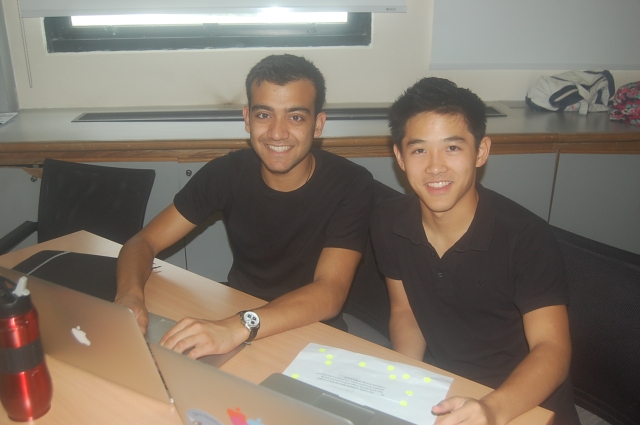
Student Comments
I also asked student to write directly in an anonymous manner what teachers and parents should take away from this study of technology and youth culture. Here are their comments:
(1) “Teachers and parents are the people we look up to most. Even though we admit that we often distance ourselves, retreating into our own limited social circles, we want you to know that we don’t actually prefer to be alone. It’s just that we don’t know how to initiate conversations anymore. Please help us communicate with you and others. We’re willing to try as long as you put in the effort too.”
(2) “For our current generation, technology has played a huge role in education, communication, and more. But as we know, to every positive comes a negative, and when anything is used too frequently, or becomes the ideal tool in our everyday lives, new problems can emerge. There are many examples, but one that stands out is the lack of social interaction or the skills to communicate face to face. We must cut down the amount of technology we use, and begin participating in more discussions, handwritten presentations and collaborative exercises, all in person.”
(3) “Technology has become a great educational tool and should be used often, but hopefully we can still have lots of discussions and conversations as classes rather than through Schoology or other platforms. Occasionally having shared inquiries and discussions in class seems to be much better for our learning as students than just writing essays or responses all the time, so it would be great if we could maintain a balance between learning with and without technology.”
(4) “Parents who are given access to Powerschool or Schoology shouldn’t always constantly check even if they are curious. Every student likes to keep their privacy and if they have bad grades, they know. They don’t need the constant reminder and put-downs to know that they’re not doing so well in the class. As much as parents are worried about their child’s grades, the child himself or herself feels the same, and if more anxiety and guilt of not being able to keep their grades up and not being the ‘good’ child their parents want them to be. Constantly reminding students about their grades won’t help them grow, it only makes them more competitive and they go to school for the sake of getting the ‘good grades’ to get into university. Yes, technology has made monitoring a child’s progress much more convenient now, however, it brings unnecessary stress and anxiety to the child when parents are closely watching everything they do at school.”
(5) “Technology is used for convenience of communication. It is undoubtedly both fast and efficient. But how we take advantage of technology may change our personal identity. With a spectrum of social networking applications available on demand, it is difficult for one to avoid the use of some. Real time interactions would rarely be seen from people, as most of them are preoccupied with whatever to say/do on the internet. Do not devote most of your time on technology, whether on the Internet or on the phone. Keep a healthy balance between face-to-face social interaction and instant messaging/e-mails on your smart phones as much as possible, so that we can preserve our personal identities.”
(6) “What HKIS administrators need to do is empower students with the connectivity and circumstances in which they can develop their social skills and awareness. For example, the Chinese International School has online platforms on which students can come together and voice the concerns and grievances they have of their school. The key aspect of CIS’ immense success with community development is their emphasis on student-motivated initiatives, as all of their community platforms are student maintained with participation from both students AND teachers. This is important because it instills a sense of school pride in the students. The CIS community is worlds apart from the “I’m-only-coming-here-for-the-grades-and-connections” mindset at HKIS. It’s less to do with whether or not technology negatively impacts life, but rather distinguishing the school as a body that cares.”
(7) “Technology is meant to allow students to be more connected with what is going on in class as well as provide a new resources for the benefit of learning. However it has also brought upon students a pressure of keeping up-to-date with all the work and grades rather than allowing students to grow in a more comfortable environment where we can maximise our learning by potential by self-discovery.“
(8) “Everyone has to find the balance between letting technology create a better life experience and allowing it to produce self destructive habits. People have different traits that are brought out by technology, good or bad, but the over-saturation of technology brings about the bad ones more often. Young people are especially susceptible to this addiction due to a lack of self control, and it is actually so simple to slip into lazy habits that become increasingly difficult to change. Although everyone is affected, adults should provide some sort of support in extracting people out of the technology bubble. I’m not saying that parents and teachers have to now hover over students because that is just counterintuitive. Instead, it would be helpful to create plenty of opportunities for activities not involving the internet throughout the years of someone’s (the next generation’s) development. As always, create more time to have real life conversations in its purest form or let it come naturally from activities with your kids, if you find your family is lacking face to face connection.“
(9) “Technology, although great for efficiency and learning, has its own downfalls too. HKIS is so demanding when it comes to technology usage; however, if we want to build a more nurturing and caring environment, we need to realize that utilization of technology isn’t the only way to have students absorb information. We should incorporate more hands on activities for students, so that they can creatively express themselves rather than being limited by the use of technology.“
(10) “It’s pretty obvious that human connection has much more value over technology connection. Although technology is extremely convenient in terms of communication and distance connection you are so limited with feeling and reality. There becomes a point where you are so limited with expression or feelings that you become disconnected from yourself and begin to rely much more on technology to help you feel whole again. Taking this opinion into consideration I think although emails and online help can be useful, if you have the chance to talk face to face with a student we can create a more comfortable and caring learning environment. Technology is there to give help when you can’t physically be there. Think of it like a ying and yang symbol, you need to balance both sides.”
(11) “Technology has improved many aspects of our education but hopefully we could cut down our use of it. Technology’s significant amount of use in HKIS causes us to feel comfortable with learning only when the use of technology is incorporated.”
(12) “Heads up parents. If you want your child to have a better future, then he/she better learn how to talk face-to-face, one-on-one, serious talk. Dear teachers, please scare the students to speak more often, but not to the point where they become traumatic.”
(13) “Think about your childhood. Now think what would have been different in your youth with the addition of the technology present today. Based on that think about what you could do to keep what we kids experience same as before, and apply that to your children/students. Even though your child could be a highschooler its not late to change.”
(14) “Sometimes, you have to just simply Look Up. Whether you’re a parent, student, or a teacher, take a break from the device that you’re holding or the device that’s in front of you, and look up from the screen. Take a break from our technology-concentrated society, look up, and breathe. Once you bring your head up and focus on reality, you can ask yourself, “Where am I? Why am I here? What am I doing?” Maybe if you just look up once in awhile and take a minute to take in what is around you, just maybe, things will change.” Look Up: https://www.youtube.com/watch?v=Z7dLU6fk9QY
Conclusion
What stands out in these students’ analyses and comments is the contrast between their seemingly contented preoccupation with their devices and the deep-seated collective concern that something is awry. There is a fear, as Sherry Turkle states, that our gadgets are not only changing what we do, but also who we are. If identity is the primary task of adolescence, then growing up has just gotten extraordinarily far more complicated. The plea from these students is for schools and classrooms to be places of care where authentic, face-to-face relationships are primary. While online communication can augment these interactive spaces, the yearning for genuine, in-person relationships remains the bedrock of school life.
Print Resource
Garder, H. & Davis, K. (2013). The app generation: How today’s youth navigate identity, intimacy, and imagination in a digital world. New Haven: Yale University Press.
Image Resource
Feature image: http://discoverysimulations.com/technology-education/
Addendum
The numbers in parenthesis represent the number of dots each statement received. All 19 statements originate from student comments on blog entries as they reflected on reading The App Generation and watching the movie, “Disconnect.”
- Because technology does not require vulnerability, online relationships by nature are often jocular and easily dismissed, removing the commitment necessary for genuine friendship or collegiality (25).
- By having social media constantly updating ourselves on what others are doing, we not only raise our own standards of expectation, but create a situation in which these endless comparisons result in a lowering of self-esteem (22).
- Despite youth’s hyperconnectivity, there is a loneliness of young people today that seems more pervasive due to the sense that one is insignificant in the context of millions of other young people accomplishing more and being more popular than you are (21).
- The ability of teachers and especially parents to track students’ educational progress and apply micromanagerial pressure results in not only a lack of independence among youth, but, more worrying, a potentially crippling paranoia that increases the risk of melancholy and even depression (16).
- Technology takes time and attention away from those things of deeper value and gives priority to that which is attention-grabbing and superficially stimulating.
- The anonymity of online culture has created environments in which people can act in hurtful ways without consequences (11).
- The readily available store of online images has removed the imaginal dimension to young people’s formative years, resulting in a decrease of creativity among today’s youth (11).
- Young people make all kinds of claims online about their abilities or lives, but in actual fact, there is less willingness to take action in real life that might reveal their inadequacies (11).
- Our preoccupation with virtual reality has disconnected us from offline social reality and the natural environment (10).
- Online culture contributes to superficial and unstable relationships in part because the self created on social media is often illusory and manufactured (9).
- Our reliance on technology has morally compromised our work ethic in that we are more greedy, lazy, unmotivated, and have lost a sense of self-control (9).
- Just like technology diminishes our definition of what it means to be a “friend,” the potentially distancing effect of social media cheapens our understanding of empathy, furthering its global decline (7).
- Technology has hurt our family lives because entertainment has become an individual activity with non-living entities rather than a communal activity with family and friends (6).
- Spending more time online and less time physically engaged in work is weakening our bodies, putting our long-term health at risk (6).
- More insidious than smoking because of its apparent neutrality, technology has become a new addiction that ultimately decreases social interaction, which is key to life satisfaction (5).
- While much attention has been given to anonymous online predators, it is far more likely that young people will be “harmed by someone they know offline than by an online stranger” (p. 82) (5).
- Trust in society has been dropping for some years, and the anonymity of the Internet only reinforces the sense that in general people cannot be trusted (4).
- Easy access online between family and friends has paradoxically resulted in the devaluing of actual time with the people we most care about because they are always available virtually (1).
- The culture of comparison fostered by social media and instant updating of one’s status or grades leads students to do anything, including cheating or doing drugs, to raise achievement or boost powers of concentration, while simultaneously decreasing their real sense of confidence in their own abilities (1).

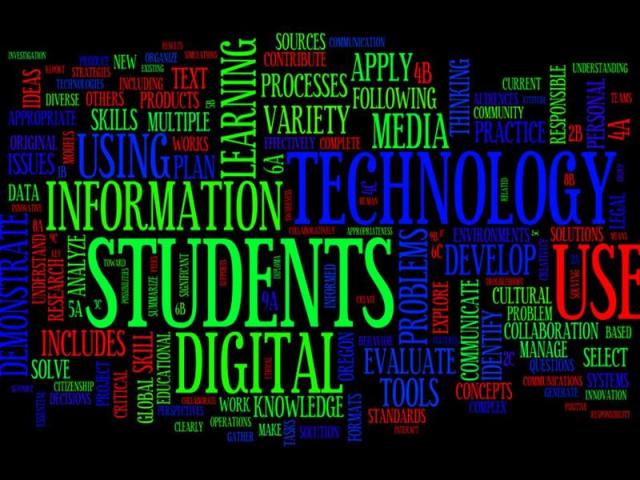

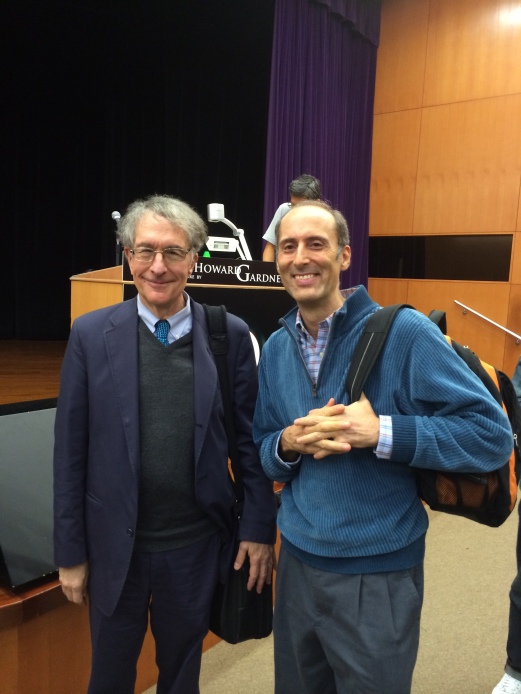
Pingback: Technology and Our Future Debate: “How Do We Separate the Gift from the Curse?” | Social Conscience Education
Pingback: Students React to “The App Generation” | Howard Gardner
Pingback: “Technology Doesn’t Make us ‘Appy: Young Hongkongers ‘depressed by social media’ ” by Katie Whitehead about the App Generation (South China Morning Post, December 2, 2014) | Social Conscience Education
Pingback: “Left to Their Own Devices” by Katie Whitehead about the App Generation (South China Morning Post, December 2, 2014) | Social Conscience Education
Pingback: “Left to Their Own Devices” by Kate Whitehead about The App Generation (South China Morning Post, December 2, 2014) | Social Conscience Education
Pingback: Beyond Holistic Education: A Pedagogy of Spiritual Activation | Social Conscience Education
Pingback: A Turn Towards the Vertical: Best Books and Resources of 2014 | Social Conscience Education
Pingback: Body, Mind and Heart: A New Curriculum Approach to “Service, Society, and the Sacred” | Social Conscience and Inner Awakening
Pingback: Education for Transformation: Introducing Humanities I in Action | Social Conscience and Inner Awakening
Pingback: Separation or Interbeing: Teaching for Wisdom in an Age of Technology | Social Conscience and Inner Awakening
Pingback: “I Feel Myself Radiating with Life:” One Student’s Journey of Awakening through Holistic Education Courses | Social Conscience and Inner Awakening
Pingback: How to Search for A Meaningful Life: Introducing the Tripartite Heart | Social Conscience and Inner Awakening